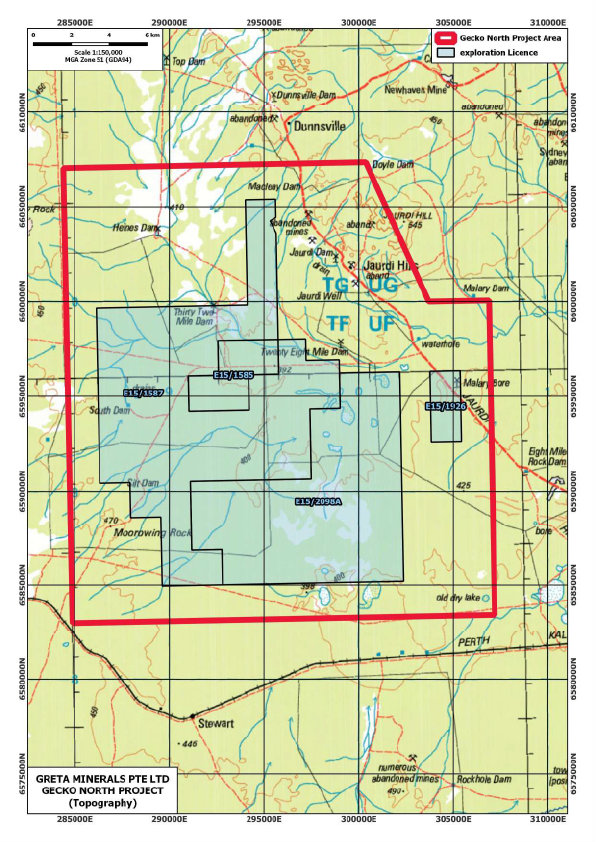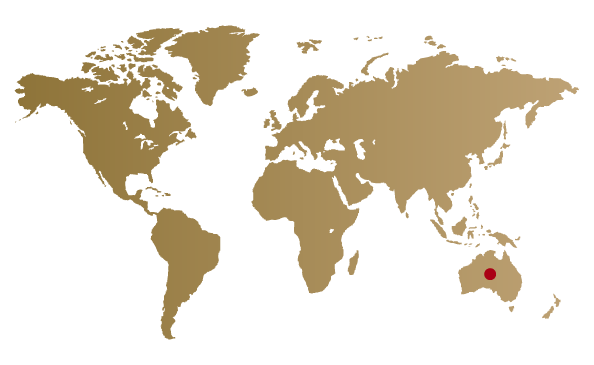Gecko North Hill
The Gecko North Project, located in Western Australia’s Eastern Goldfields, spans approximately 50 km² and is highly prospective for both critical minerals—notably lithium—and gold mineralisation. This project is strategically positioned near key structural and geological features associated with some of the region’s most significant deposits.

High-Grade Gold Discovery and Geological Significance
In December 2022, a surface rock chip sample from the project area returned high-grade assays of 20.8 g/t gold and 13 g/t silver (average of three assays), immediately elevating Gecko North to a high-priority exploration target.
Although UltraFine+™ soil sampling did not reveal widespread surface anomalism for gold or silver, the presence of interpreted paleochannels—one currently mined by Beacon Minerals at the nearby Lost Dog Mine (~10 km east)—suggests that this may be transported or alluvial gold. However, Greta Minerals’ field reconnaissance and review of historic exploration, including RAB drilling by a previous explorer, indicate potential for a much larger gold system beneath transported cover. Notably:
- One historical RAB hole intersected 4 m @ 0.68 g/t Au from surface
- Structural interpretation suggests proximity to a significant domain boundary between the Bullabulling and Coolgardie domains—a key accretionary structure within the Eastern Goldfields Superterrane
This domain boundary is known to localise multiple significant gold systems, including:
- Beacon Mining’s Gecko Gold Mine (~15 km to the SSE; 1.38 Mt @ 1.29 g/t Au)
- The major Bullabulling Gold Deposit (~3 Moz), ~25 km to the south
Lithium Potential: Large-Scale Soil Anomalies
Initial UltraFine+™ soil geochemistry has identified three distinct lithium anomalies across the project area, with the two largest anomalies now forming a single, continuous lithium anomaly:
- Lithium Anomaly 1:
- ~6.4 km long, up to 3.1 km wide
- Peak lithium value: 86.6 ppm Li
- Open in all directions (NW, NE, S, E)
- Partially hosted within Silt Dam Monzogranite, a highly fractionated fertile granite
- Lithium Anomaly 2:
- Defined by a north-south soil line across a historically drilled area
- Peak lithium value: 76.3 ppm Li (average 49 ppm)
- Open in all directions
- Lithium Anomaly 3:
- Located in the project’s southwest
- Peak lithium value: 65.1 ppm Li (average 49.5 ppm)
- Also open to the north, south, and east
These broad and open-ended lithium-in-soil anomalies suggest significant subsurface pegmatite potential, warranting further systematic follow-up exploration, including mapping, trenching, and drilling.
Caesium Potential
Initial UltraFine+™ soil geochemistry has identified one distinct caesium anomalies across the project area:
- Caesium Anomaly 1:
- Up to ~2.1 km long, up to 400 m wide
- Peak caesium value: 41.7 ppm Cs
- Open in all directions (NW, N, NE)
This anomaly has a negative relationship with the surround Lithium Anomaly 1. This relationship and soil geochemical tenure is like the Pioneer Resources Ltd Sinclair caesium deposit with an initial resource of 10,500 t at 17.1% Cs2O in pollucite. Caesium is only formed in extremely differentiated LCT pegmatite systems. This is further evidence that pegmatites underlie the alluvial and colluvium cover sequences.
Strategic Outlook
Strategic OutlookWith compelling early-stage gold results, proximity to major domain boundaries, and large-scale lithium and possibly caesium anomalies across fertile granitic terrain, the Gecko North Project offers a unique opportunity for dual-commodity discovery. Ongoing exploration will focus on delineating drill targets beneath cover and expanding geochemical datasets to validate the project’s considerable upside.
Frequently Asked Questions

